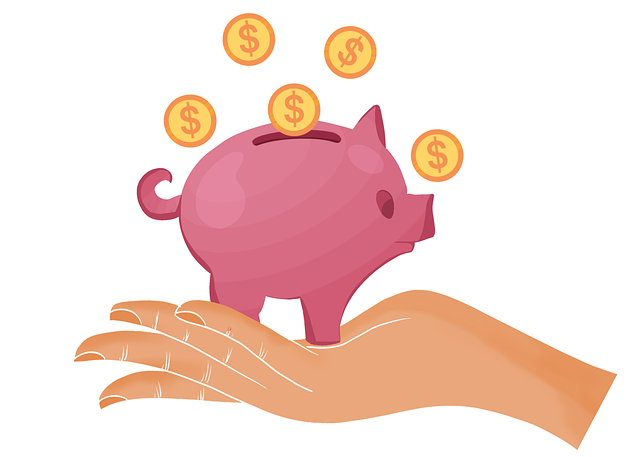TL;DR: Loan rates for business equipment financing are multi-factored, including equipment nature, borrower creditworthiness, industry type, market conditions, and lender health. Lenders assess these factors to set risk-based rates. Understanding these rates is crucial for businesses seeking machinery or vehicles, as they directly affect borrowing costs. Fixed and variable rate structures cater to different needs, with fixed rates offering predictability and variable rates potential cost savings based on economic indicators. Meticulously comparing loan terms, periods, and fees across various lenders can lead to significant savings, especially during robust economic periods when rates are competitive. Negotiating lower rates through understanding market trends and leveraging strong business cases enhances borrowing terms.
“Unraveling the complexities of equipment financing is crucial for businesses seeking growth. This article delves into the intricate world of loan rates offered by leading equipment lenders, providing a comprehensive guide for informed decisions. We explore factors shaping these rates, dissect the interest rate structures of prominent lenders, and offer strategies to navigate the market effectively. By understanding the dynamics of loan rates, businesses can unlock competitive financing options, ensuring sustainable growth and maximizing returns.”
- Understanding Loan Rates: Factors Influencing Equipment Financing
- Leading Equipment Lenders and Their Interest Rate Structures
- Comparing Loan Rates: Uncovering the Best Deals for Your Business
- Impact of Market Conditions on Equipment Loan Rates
- Strategies to Negotiate Lower Interest Rates for Your Next Equipment Purchase
Understanding Loan Rates: Factors Influencing Equipment Financing

Interest rates for equipment financing vary based on several factors, which is why understanding loan rates is crucial for businesses seeking to acquire machinery or vehicles. Lenders carefully consider the nature of the equipment being financed, its intended use, and the creditworthiness of the borrower before setting these rates. The type of industry and the operational risk associated with the equipment are key determinants. For instance, financing a high-tech manufacturing machine may carry a different rate than lending to a farm for agricultural machinery due to contrasting risk profiles.
Additionally, market conditions, economic trends, and the lender’s own financial health influence loan rates. Lenders often adjust their rates according to prevailing interest rate movements in the open market. They may also consider the borrower’s ability to repay, including cash flow projections and existing debt obligations. Flexible repayment terms and down payments can impact the overall cost of borrowing, making it beneficial for businesses to explore different financing options and negotiate favorable conditions.
Leading Equipment Lenders and Their Interest Rate Structures

Leading equipment lenders play a crucial role in facilitating access to capital for businesses seeking to acquire machinery, vehicles, or other assets. Their interest rate structures vary significantly, reflecting the diverse risk profiles and market conditions of their lending portfolios. Some lenders offer fixed rates, providing borrowers with predictable monthly payments over the life of the loan. This stability can be particularly appealing for businesses planning for the long term.
Other lenders opt for variable rates that adjust periodically based on underlying economic indicators or benchmark interest rates. While this approach may result in fluctuating loan costs, it can also offer lower rates initially, making it attractive to businesses with short-term financing needs or those seeking flexibility. Understanding these rate structures is essential for prospective borrowers when comparing offers from different equipment lenders and securing the most favorable terms for their specific financial situation.
Comparing Loan Rates: Uncovering the Best Deals for Your Business

When it comes to financing your business’s equipment needs, comparing loan rates is a strategic move that can save you substantial amounts in the long run. It’s about more than just securing a low interest rate; it involves understanding the terms, repayment periods, and any hidden fees associated with each lender’s offer. Take the time to scrutinize the fine print and consider factors like fixed versus variable rates, early repayment penalties, and collateral requirements. This thorough approach ensures you’re not only getting a competitive rate but also a loan structure tailored to your business’s unique needs and financial health.
Delve into the market, research various equipment lenders, and gather quotes for different loan amounts. You might discover significant variations in loan rates, even among reputable lenders. By comparing these rates, you can identify the best deals, potentially saving your business thousands of dollars over the life of the loan. Remember, a slight difference in interest rates can compound into substantial savings, especially for long-term loans. So, don’t overlook this crucial step in securing financing; it could be the key to unlocking more profitable avenues for your business.
Impact of Market Conditions on Equipment Loan Rates

Market conditions play a significant role in determining equipment loan rates. Economic indicators such as inflation, unemployment levels, and overall economic growth influence lenders’ risk assessment and pricing strategies. During periods of robust economic health, lenders may offer more competitive loan rates as there is generally lower default risk. Conversely, in volatile or declining markets, interest rates tend to rise due to increased uncertainty and the potential for higher loan defaults.
Lenders carefully consider market trends and industry-specific factors when setting loan rates. Equipment financing is often tied to specific sectors’ performance, so a downturn in an industry like manufacturing or agriculture can directly impact borrowing costs for businesses within those fields. As such, understanding market conditions is crucial for both lenders and borrowers when navigating equipment loan options.
Strategies to Negotiate Lower Interest Rates for Your Next Equipment Purchase

When considering an equipment purchase, negotiating lower interest rates can significantly impact your overall costs. The first step is to understand the current market trends and loan rates offered by various lenders. Researching and comparing different financing options is crucial, as it allows you to identify competitive rates and tailored programs suited to your needs. You may discover that some lenders cater to specific industries or equipment types, offering more favorable terms.
During negotiations, present a strong business case. Lenders often consider factors like your creditworthiness, the value of the equipment, and the repayment period. Demonstrate your financial stability, and highlight any unique aspects of your purchase that could make you a lower-risk borrower. Additionally, shopping around for multiple quotes can give you leverage, as lenders may be more inclined to offer better terms to secure your business.






